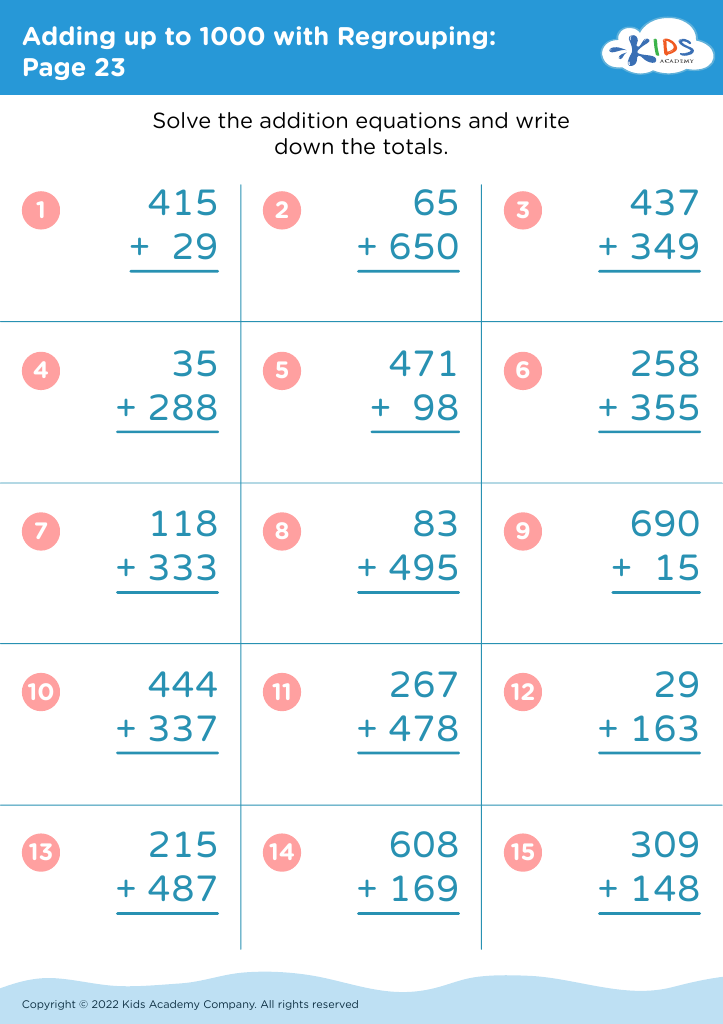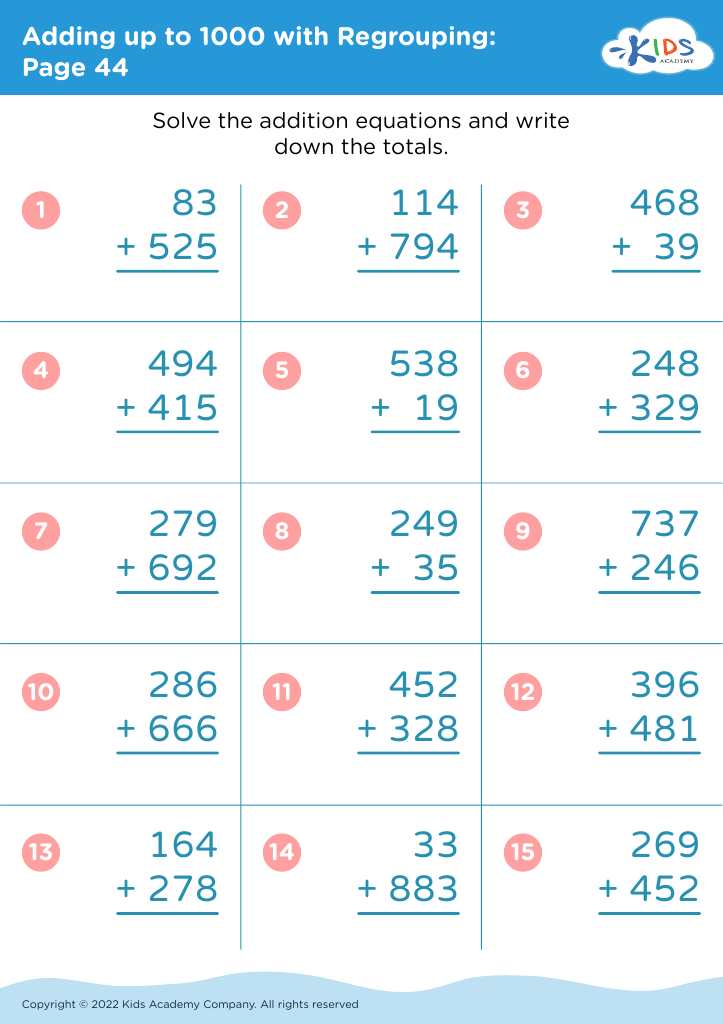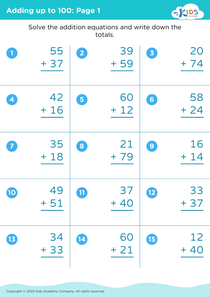Recognize patterns Adding up to 1000 Worksheets for 9-Year-Olds
6 filtered results
-
From - To
Explore our engaging "Recognize Patterns Adding up to 1000 Worksheets" designed specifically for 9-year-olds! These interactive and colorful worksheets focus on developing vital math skills, helping children understand numerical relationships and patterns. By recognizing patterns in addition, students will enhance their problem-solving abilities and build a solid foundation for future math challenges. With a variety of exercises, from simple addition to more complex problems, kids will enjoy honing their skills while having fun! The worksheets are perfect for classroom use or at-home practice, ensuring that children stay motivated and challenged as they progress towards mastering addition up to 1000.
Recognizing patterns, especially when adding up to 1000, is crucial for 9-year-olds for several reasons. First, it enhances mathematical fluency. Understanding numerical patterns helps children quickly grasp addition and subtraction, making them more adept problem solvers. By recognizing relationships among numbers—like how 200 + 800 equals 1000—students develop mental strategies that simplify calculations and boost confidence.
Moreover, pattern recognition fosters critical thinking skills. As children begin to see patterns, they can apply these insights to broader mathematical concepts, such as multiplication or division, enabling a smoother transition to more complex operations. This foundational skill lays the groundwork for advanced topics in mathematics, including algebra.
Additionally, recognizing patterns helps ignite a child’s curiosity. Once students discover that numbers are connected and follow certain rules, they become more engaged in learning. This engagement can lead to a more positive attitude towards math, countering the common anxiety associated with it.
Finally, pattern recognition is applicable beyond math. It teaches children to observe, analyze, and solve problems in various contexts, fostering essential life skills. By emphasizing this ability, parents and teachers can ensure their students are better equipped for academic success and future challenges.























